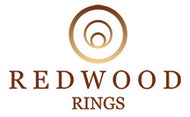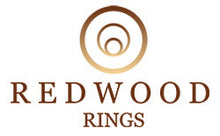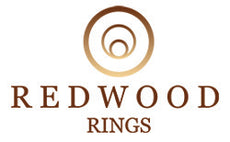Are Men and Women Ring Sizes the Same?

There's essentially no distinction between men's and women's sizes. Unlike clothing, where sizing often varies significantly between genders, ring sizes operate on a spectrum that caters to all. Traditionally, men tend to have larger fingers than women, which usually means they opt for larger sizes on the same spectrum. However, the size chart remains uniform across genders, accommodating a wide range of finger sizes. The notable difference lies not in the size but in the design - women's rings are typically thinner and more delicate in style, while men's rings are often broader and more robust in appearance. This design variation addresses different aesthetic preferences and physical proportions rather than differences in the sizing system itself.
Understanding Ring Size Charts
Ring size charts are essential tools in determining the correct ring size for both men and women , and they are designed to be universally applicable. These charts do not differentiate between genders but rather provide a range of sizes based on the finger's circumference. This universality ensures the chart covers a wide spectrum of sizes to accommodate all finger sizes. Typically, in the U.S., ring sizes are measured in inches, while internationally, the measurement is often in millimeters. This variation in measurement units is typically reflected in the charts, offering conversions as needed. The size spectrum of these charts ranges from very small sizes, ideal for individuals with slender fingers, to larger sizes for those with thicker fingers, ensuring a size fits everyone. Understanding how to use these charts effectively is key in selecting a ring that fits comfortably and looks aesthetically pleasing.

Difference in Ring Sizes
The distinction between men's and women's preferences is often influenced by physical differences yet accommodated within a universal sizing system. Traditionally, men's fingers tend to be larger, leading them to select sizes from the higher end of the spectrum. In the United States, for instance, the common ring sizes for men range from 8 to 14, with 9 to 11 being particularly prevalent. This scale is directly linked to the finger's circumference, measured in inches domestically and millimeters internationally. A U.S. size 7, for instance, corresponds to a circumference of 2.14 inches or 54.5 mm, reflecting this dual measurement system.
On the flip side, women generally have smaller, more slender fingers, mirrored in their choice of ring sizes. Women's rings typically vary from size 3 to 12, with the sweet spot falling between sizes 6 and 8 . These sizes, just like men's, are based on the finger's circumference, with similar variations between U.S. and international sizing standards.
Despite these general trends, it's important to recognize the individual variations. While men may commonly opt for sizes 9 to 11 and women for 6 to 8, personal preferences and physical differences mean that there is no one-size-fits-all rule. The ring sizing system is designed to be inclusive, ensuring that regardless of gender or physical stature, there is a size that fits everyone comfortably and accurately.
Ring Width and Design
Typically, men's rings are designed with a wider band. This broader style complements larger finger sizes and aligns with a more masculine aesthetic, ensuring the ring looks proportionate and comfortable on the hand. The wider bands on men's rings often allow for bolder, more substantial designs, including larger settings for stones or more intricate patterns and textures.
Conversely, women's rings tend to feature narrower bands. These slimmer designs are more comfortable for smaller finger sizes and align with a more delicate and often more intricate aesthetic. The narrower width suits women's typically smaller hands and fingers, allowing for a more refined and elegant appearance. This design approach also lends itself well to including finer details, such as intricate metalwork, smaller gemstone settings, and delicate engravings, which might be overwhelmed by a wider band.

Measuring Ring Sizes
Use a Ring Sizer
The most accurate way to measure ring sizes is using a professional ring sizer, commonly available at jewelry stores. This tool includes a set of rings in various sizes, allowing for a precise fitting. Trying on these rings will help you find the perfect size that is comfortable and snug.
Did you know ?
That resizing rings is a common practice? So, even if initial sizes aren't a perfect match, adjustments can be made for a comfor fit.
String or Paper Strip
In the absence of a ring sizer, a thin strip of paper or a piece of string can be a handy alternative. Wrap it around the finger where the ring will be worn, mark where it overlaps, and then measure this length against a ruler. This measurement will give you an approximate circumference of the finger, which can be matched to a ring size chart.
Size Variations
Factors like temperature, time of day, season, and physical activities can all cause fluctuations in finger size. It's important to measure when your body is in a normal state, ideally in the afternoon or evening after your body has adjusted to the day's activities. Keep in mind that fingers might swell in hot weather or after exercise and shrink in cold conditions.
Additional Tips
The ideal ring size should slide over the knuckle comfortably while ensuring it's not too loose on the finger. Also, bear in mind that rings with wider bands typically require a larger size. If you're choosing a ring with broadband, it might be prudent to go up half a size for a more comfortable fit. Additionally, obtaining a professional measurement from a jeweler is advisable for those investing in valuable or custom-designed rings. A jeweler's expertise ensures the most accurate sizing, which is crucial for such significant purchases.
Are Tungsten Rings Heavy?
Tungsten rings are known for their substantial feel, offering a weightier sensation than many other jewelry metals, which is often interpreted as a sign of their durability and quality. Despite this, they are not uncomfortably heavy and are perfectly suited for everyday wear. The density of tungsten carbide—the material most tungsten rings are made from—gives these rings a satisfying heft, distinguishing them from lighter metals like titanium or aluminum. This weight contributes to the appeal of tungsten rings, providing a reassuring presence on the finger that many find appealing. However, the difference in weight is balanced by the comfort and the sleek, modern aesthetic tungsten rings offer, making them a favoured choice for those seeking a durable, stylish option that feels as substantial as the commitment it symbolizes.
Are Men and Women Ring Sizes the Same?
The question are men and women ring sizes the same lies more in physical size differences and design preferences than in the sizing system itself. The universal sizing chart covers a wide spectrum that accommodates both genders, with men typically selecting larger sizes and women opting for smaller ones. While men's rings often feature wider bands and a more robust aesthetic, women's rings are designed to be narrower and more delicate.






